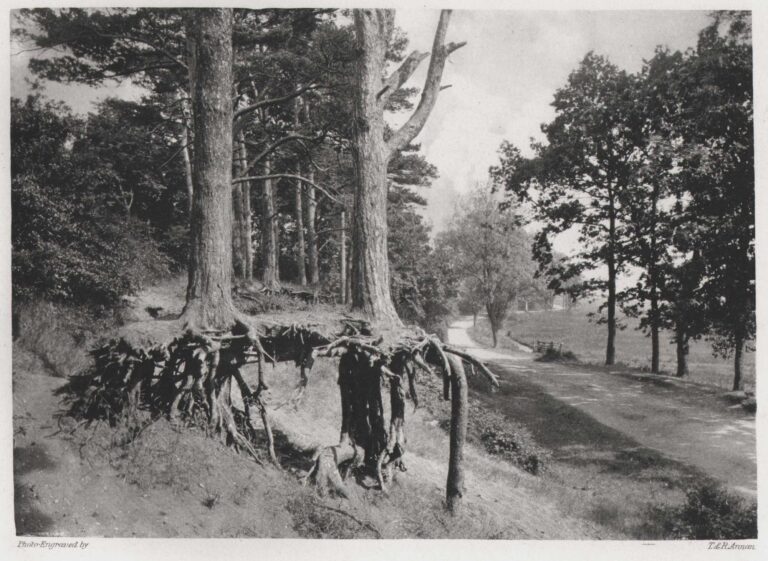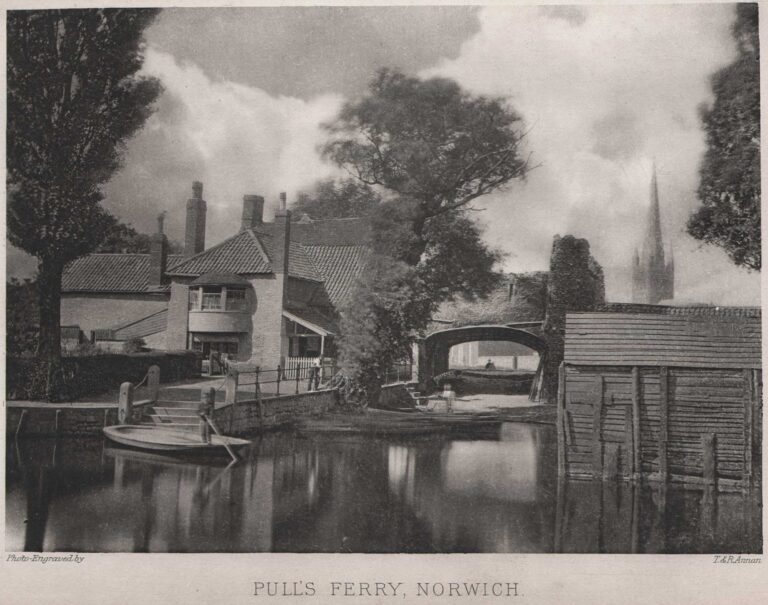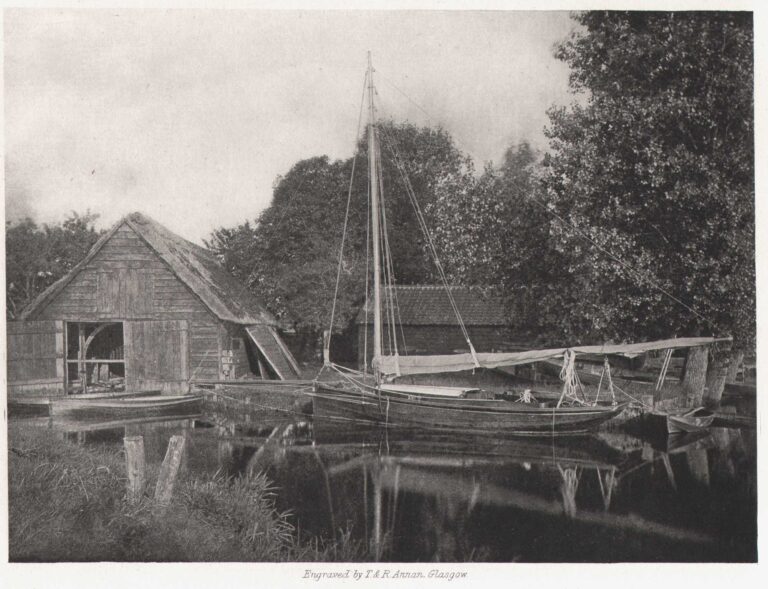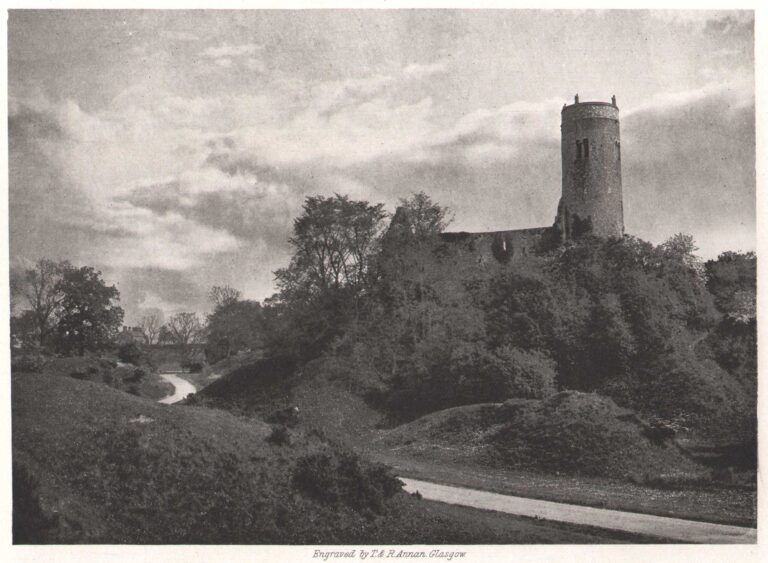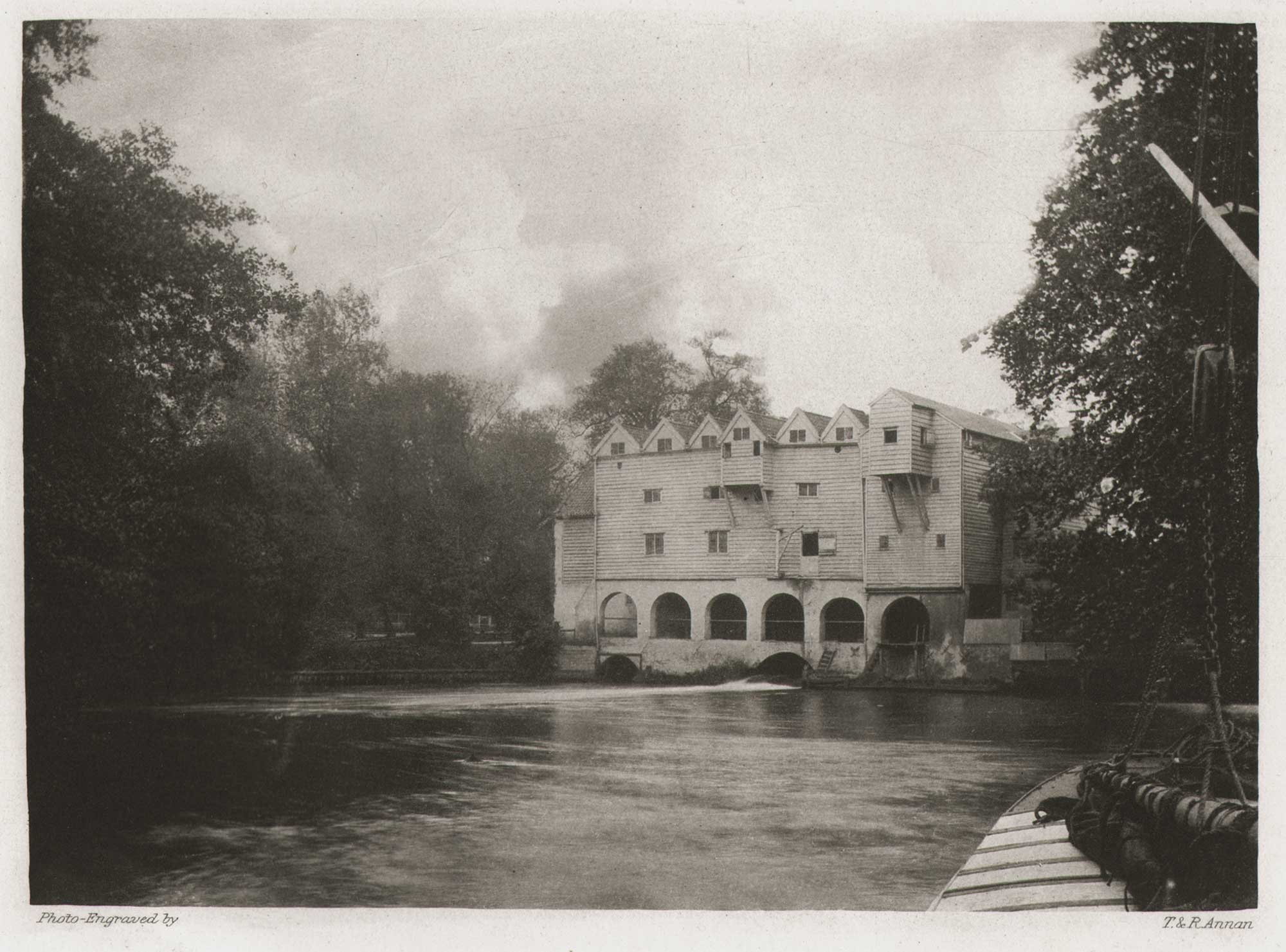
Horstead Mill: River Bure
“This mill, situate on the upper part of the river Bure near Coltishall, is typical of all Norfolk watermills. It is a building spanning the stream, and the great wheels are worked by the water impinging on their lower floats,⎯undershot, in contradistinction to the overshot mills of other districts, where the greater difference in levels permits of the water flowing over the wheels instead of under.” Plate XIX: Horstead Mill: G. Christopher Davies, 1883
From the Britain Express website, we learn Horstead Mill, shown in this photograph around 1882, was a structure dating to about 1789. In 1963, the mill burned and today one can only see remains of some of the brick arches where water passed through from the River Bure.
“There has been a mill on the River Bure at Horstead since at least Saxon times, and very possibly much earlier. A mill was recorded in the Domesday Book of 1086 when it was owned by St Benet’s Abbey along with both Coltishall and Horstead manors. When the abbey was suppressed by Henry VIII he granted the mill to King’s College in Cambridge. The college held the mill until 1910 when it was sold into private hands.
For several hundred years until the mid-18th century there were two mills at Horstead, both under the same ownership. One was a watermill for grinding corn, and the other was a fulling mill used to process woollen cloth by pounding the cloth with hammers. These are recorded in a survey by King’s College in 1586.
In 1789 an earlier 16th century mill was completely rebuilt. The new mill drove two pairs of grinding stones. The mill building was weatherboarded, under a pantile roof. The bottom section of the mill was built over 6 brick arches. The second floor had overhanging gables on both sides for loading and unloading goods with the aid of pulleys.
The mill was driven by two wheels; the older and larger being an undershot design. The smaller wheel was replaced by a turbine later in the mill’s life. A devastating flood in 1912 made transportation of ground flour difficult, so the mill ceased grinding grain for flour until 1915. It resumed until 1919, then reverted once more only producing animal feed.
Until 1775 Horstead Mill stood at the highest navigable point on the river. In that year the Coltishall lock opened, allowing shallow-bottomed wherry traffic to carry goods further upriver. The first vessel to use the lock was the newly constructed wherry ‘Grampus’. The wherries brought coal from Gateshead-on-Tyne and took malt, oats, and barley to Great Yarmouth for onward shipping.
The picturesque 18th-century mill became one of the most photographed sights on the river Bure, but unfortunately, it burned down in 1963 and was never restored. The mill might have been saved but for the freezing cold weather.
Today all that remains is the lower sections of the mill building, including the brick arches. The former mill pond is a very popular place for wild swimming and for angling. In 1973 the river authority installed a water gauging station at the mill site, but that has been the only real change since the fire. The historic mill is still a popular gathering place, and a lovely space to relax by the swiftly flowing water that pours through the former mill race.”
George Christopher Davies: 1849-1922
Davies was “a prolific photographer and writer who played an important role in encouraging popular awareness of the Norfolk Broads.” (1.) The following biography of the artist courtesy: Norfolk Through a Lens: A guide to the Photographic Collections held by Norfolk Library & Information Service –
Born in Shropshire, Davies practised as a solicitor for a time; he first came to Norfolk in 1871 to serve part of his articles. He was later to become Chief Clerk at Norfolk County Council in 1906, also serving as Clerk of the Peace. In his private life he was a nature lover, sportsman and photographer. His skills as a writer did much to popularise the Norfolk Broads as a rural idyll and holiday destination. When he was 27 he wrote ‘The Swan and her Crew’ an adventure story for boys set in the Norfolk Broads which created a great interest and enthusiasm for the area. His major work ‘Handbook to the Rivers and Broads of Norfolk and Suffolk’ was published in 55 editions and contained 12 of his own photographs. Davies also produced other books about the Broads, sailing, Belgian waterways, natural history, fishing, adventure books for children and even some on government administration. Towards the end of his life he acquired Burnt Fen Broad and spent many hours there during his retirement.
- George Christopher Davies: Wikipedia accessed September, 2025
